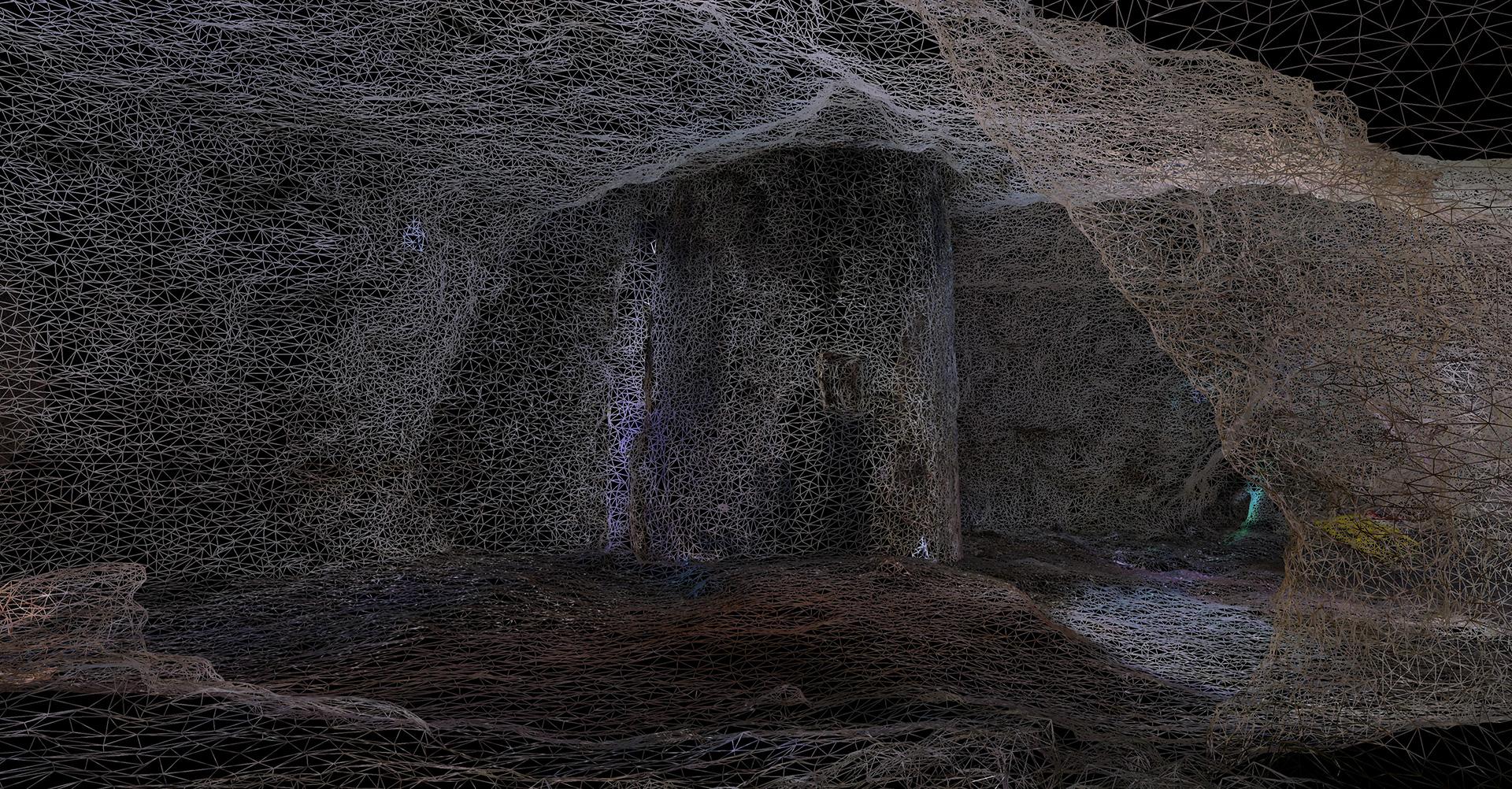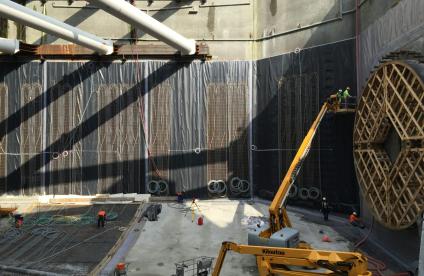
Chiffres clés
-
50.00key research facilities received the EquipEx+ label at national level
-
8.00state-of-the-art facilities won the EquipEx+ 2020 Call for Expressions of Interest in the Centre-Val de Loire region
-
5.00projects focusing on the environment and the universe
-
3.00projects focusing on digital technologies
The EquipEx+ "Structuring facilities for research" programme is an extension of the French government's policy aimed at supporting the development of new scientific facilities with a nationwide scope, in order to promote France's leading role in research.
At the end of December 2020, out of a total of 50 state-funded projects certified with the EquipEx+ label, eight projects involved research facilities in the Centre-Val de Loire region (compared with 7 projects selected out of a total of 93 in the previous period). The eight projects are: BIBLISSIMA+, GAIA DATA, IMAGINE 2, MARMOR, MESONET, OBS4CLIM, T-REFIMEVE, and TERRAFORMA.
Projects bringing together BRGM, CNRS and the Universities of Orléans and Tours
These infrastructures, which bring together BRGM, CNRS and the Universities of Orléans and Tours, will consolidate the region's position as a research hub at national level and reinforce the scientific expertise of laboratories in the Centre-Val de Loire by developing their relations with other laboratories in France.
Five projects are focused on "environment and the universe" and three on "digital technologies".
The facilities will contribute to raising the profile of higher education and research in the Centre Val de Loire region and strengthen cooperation between research establishments.
IMAGINE2
The IMAGINE2 project (French national platform of IMAGing and analysis for the enviroNmental and Energy transition) aims to create a national scientific and technical platform to promote the development of materials (natural, engineered or advanced) to facilitate the energy and environmental transition. It involves four research laboratories in the region: ISTO, ICMN, CEMHTI and GREMI.
In the view of Lionel Mercury, Director of ISTO (CNRS, University of Orléans, BRGM), "this project is a fantastic showcase for the research being carried out to ensure the future success of the energy transition, and will ensure France remains at the cutting edge in terms of the tools available on the market. The project reinforces the already remarkable number of instruments deployed across the Orléans plateau for observing and analysing rocks at microscopic levels, thanks to the support of the Centre-Val de Loire region and the second 'Investing for the Future Programme'." According to the researchers at BRGM's Mineralogy, Geochemistry and Modelling of Geological Systems Unit, "IMAGINE2 will lead to fruitful collaborations and will raise the profile of the work conducted at the University of Orléans and BRGM, by providing analytical and experimental resources of international relevance."
GAIA Data
The GAIA Data project aims to develop and implement an integrated and distributed data-and-services infrastructure for observing and modelling the Earth system and the Environment.
"This infrastructure will provide theme-based services that meet the needs of scientific communities in terms of observation and modelling. What makes it original is that it provides access to a wide variety of data sources (satellite, airborne, ground-based and in situ data) to create value-added services for the environmental, agricultural and spatial planning sectors. The project essentially draws on the new DataCentre infrastructure funded by the Region and the French government," explains Olivier Pouvesle, who works in BRGM's Digital Infrastructure and Services Department.
MARMOR
The MARMOR project aims to develop an advanced marine geophysical research facility and a multidisciplinary research and surveillance observatory in Mayotte, at a time when the most significant volcanic eruptions in the last 250 years have been occurring on the region's ocean floor.
"It will give France a community-based infrastructure for observing telluric phenomena, carrying out imaging of the Earth's deep structure and responding to societal and environmental challenges linked to the Earth and ocean sciences," says Nicolas Taillefer, who works in BRGM's Risks and Prevention Department.
T-REFIMEVE
The T-REFIMEVE project aims to provide the scientific community and industrial companies with a comprehensive set of time and frequency signals, from the best international metrology laboratories.
"The Nançay radio telescope is already part of the LEAP/EPTA network that groups together the five largest European radio telescopes for pulsar timing. With T-REFIMEVE, the observational power will be increased to make it possible to detect gravitational waves. The main objective is to measure the signal produced by the supermassive black holes present at the centre of galaxies", explains Stéphane Corbel, Director of the Nançay Radio Astronomy Station (CNRS - University of Orléans - Paris Observatory).
Dominique Delcourt, Director of the LPC2E (CNRS - University of Orléans - CNES), explains that "this involvement in T-REFIMEVE will give astrophysicists access to scientific data with a level of precision and resolution that have never been achieved before, particularly for studying the supermassive black holes (several billion solar masses!) present in the universe. The scientific results expected from the project will reinforce the national and international reputation of the LPC2E."
Biblissima+
The Biblissima+ project creates a structured framework that brings together a series of digital collections of scientific data on the history of the circulation of texts in the West, from the Middle Ages to the end of the "Ancien Régime" (end of 18th century). Biblissima focuses on documents written in the main cultural languages of medieval and renaissance Europe (Arabic, French, Greek, Hebrew, Latin, Syriac, etc.). It provides a single portal that gives easy, coordinated access to a vast amount of documentation on ancient manuscripts and printed documents, with details of the successive owners and readers. In this way, it contributes to improving our understanding of how texts circulated, along with the development of libraries, and how knowledge was transmitted in Europe from the 8th to the 18th century. On a more general level, Biblissima promotes the dissemination of knowledge about the heritage of the written word to the widest possible audience. The Centre d'Etudes Supérieures de la Renaissance (CESR - University of Tours, CNRS and the French Ministry of Culture) and the Institut de Recherche et d'Histoire des Textes (IRHT - CNRS) are two of the ten founding teams behind this project.
OBS4CLIM
The OBS4CLIM project reinforces the synergy between French organisations involved in atmospheric chemistry and three European research facilities (ACTRIS, ICOS and IAGOS): innovative developments, integrated access to unique services, etc. The ICARE laboratory of CNRS is involved in this project.
TERRA FORMA
The TERRA FORMA project brings together the research facilities of the eLTER network and aims to set up a new generation of "Anthropocene" socio-ecosystem observatories. The Institut des Sciences de la Terre d'Orléans-ISTO (CNRS - University of Orléans - BRGM) is contributing to this project.
MESONET
The MESONET is focused on establishing mesoscale centres ("mesocentres") in digital infrastructures for scientific calculations. It is sponsored by Universities and Grandes Ecoles via GENCI, a non-profit company. The Orléans-Tours Scientific Computing and Modelling Federation (CaSciModOT) and the Universities of Orléans and Tours are involved in the project in the Centre-Val de Loire region.







